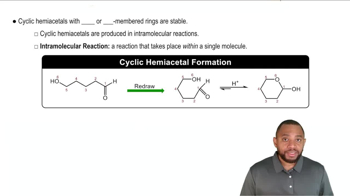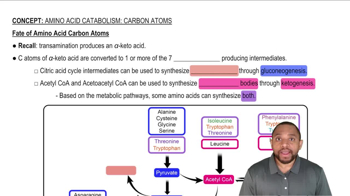Textbook Question
If α−galactose is dissolved in water, β−galactose is eventually present. Explain how this occurs.

 Verified step by step guidance
Verified step by step guidance Verified video answer for a similar problem:
Verified video answer for a similar problem:



 2:1m
2:1mMaster Mutarotation Concept 1 with a bite sized video explanation from Jules
Start learning